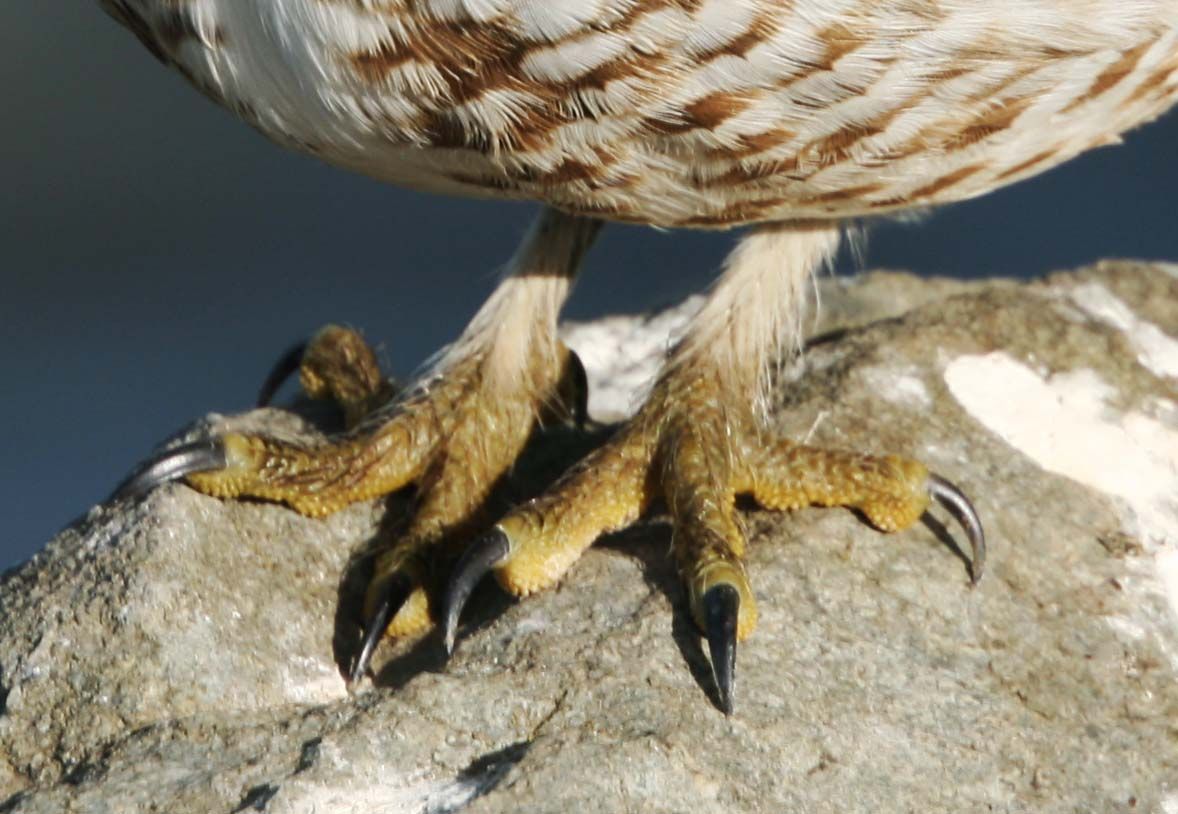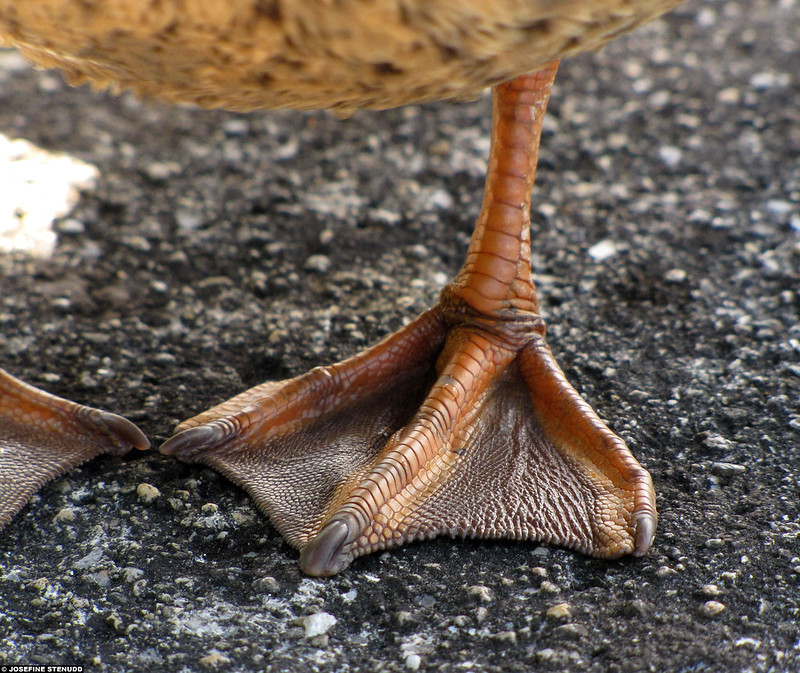Bird claws are an essential part of a bird’s anatomy, and they vary between different species. Each type of bird claw has unique features and functions that help the bird live in its habitat and find food.
Claws have many functions for each bird, including climbing, swimming, carrying, scratching for food, cradling eggs, building nests, preening feathers, and accelerating take-offs.
You are reading: 8 Types Of Bird Claws
In this article, we will explore the different types of bird claws and learn about their functions. We will also discuss why birds have different types of claws and how they help birds live in their habitats and find food.

8 Types Of Bird Claws
Anisodactyl Foot

This is the most common type of bird claw in the world, including almost all songbirds and perching birds. These birds have three toes facing forward and the hallux (or first finger) backward.
This is the typical bird claw in passerines, such as blackbirds, sparrows, and pigeons. But you can also find them on birds, like chickens and hawks
Zygodactyl Foot

This type of foot can be found on most parrots, woodpeckers, owls, ospreys, cuckoos, and some swifts and rollers. These claws are excellent for perching on branches, holding food, and climbing trunks.
In woodpeckers, this type of foot is excellent for clinging to the trunks of trees. For parrots, this type of foot is excellent for holding food. Although owls have this toe arrangement, they have the special ability to rotate their fourth digit to the front. This helps the owl perch, hold its food, and grab its prey
Heterodactyl Foot
The heterodactyl foot is a unique type of bird claw that is only found in trogons. This type of foot has two toes facing forward (digits 3 and 4) and two toes facing backward (digits 1 and 2).
The inner front toe (digit 2) is reversed, which is different from the zygodactyl foot. The heterodactyl foot is excellent for perching on branches and holding food.
Trogon birds use their heterodactyl feet to perch on branches and catch insects in mid-air. The heterodactyl foot is just one of the many types of bird claws that have unique features and functions that help birds live in their habitats and find food.
Syndactyl Foot
Read more : Can Budgies Eat Kale
The syndactyl foot is a type of bird claw that is common in Coraciiformes, including kingfishers and hornbills. This type of foot has three toes facing forward (digits 2, 3, and 4) and one toe facing backward (digit 1).
The inner and middle toes (digits 2 and 3) are joined for much of their length. In many kingfishers, one of the forward-pointing toes is missing. The syndactyl foot is excellent for perching on branches and catching prey.
Kingfishers use their syndactyl feet to perch on branches and dive into the water to catch fish. Hornbills use their syndactyl feet to perch on branches and climb trees to find food.
The syndactyl foot is just one of the many types of bird claws that have unique features and functions that help birds live in their habitats and find food.
Pamprodactyl Foot
The pamprodactyl foot is a unique type of bird claw that is found in swifts and mousebirds. In this type of foot, all four toes can be moved to the front, and the first and fourth digits can be rotated from the front to the back.
The pamprodactyl foot is excellent for clinging to vertical surfaces, such as the inside of a chimney. Swifts use their pamprodactyl feet to cling to vertical surfaces and catch insects in mid-air.
The pamprodactyl foot is just one of the many types of bird claws that have unique features and functions that help birds live in their habitats and find food.
Tridactyl Foot
The tridactyl foot is a type of bird claw that is unique to some bird species. This type of foot has three toes, with the inner toe being absent. The tridactyl foot is found in many ground birds and some waders.
The Northern Three-toed Woodpecker is an example of a bird that is missing its first digit, also called the hallux, which is the case for tridactyl feet.
Tridactyl feet enable birds to run more quickly and efficiently. The tridactyl foot is just one of the many types of bird claws that have unique features and functions that help birds live in their habitats and find food.
Didactyl Foot
The didactyl foot is a unique type of bird claw that is only found in ostriches. This type of foot has only two toes, with the inner toe being absent.
The didactyl foot is excellent for running, and ostriches are known for their speed. The didactyl foot is just one of the many types of bird claws that have unique features and functions that help birds live in their habitats and find food.
Webbed Feet

Read more : Can Parrots Eat Garlic
Webbed feet are a common adaptation in birds that spend time in the water. The primary use for webbed feet is paddling through water, and they are useful for walking on mud as well.
Webbed feet have connecting tissue between the toes of the foot, which significantly increases the surface area of the feet. This modification allows birds to push more water than just a bird foot with spread-out toes would push, which propels the bird through the water.
There are actually two different kinds of webbed feet: most swimming or paddling birds have their legs and feet located at the rear of their body, which helps to propel the birds along.
Ducks, geese, and swans all have webbed feet, as do gulls, cormorants, loons, pelicans, penguins, puffins, and boobies. There are many different types of webbed feet, and they take on a variety of different shapes, including the delta or triangular shape seen in most waterfowl and frogs.
Webbed feet are a remarkable adaptation that has evolved independently in several bird groups and have been a big evolutionary hit.
FAQS
1. Why do birds have different types of claws?
Birds have different types of claws because each bird species is unique to its environment, and they need feet that function properly in that environment. Claws serve as a tool to help birds live in their habitats and find food. Some birds simply perch on branches, while others climb trunks. Their perching surfaces can be different, as well. The claws of a bird that sits on flat surfaces will be different from those that cling to small twigs.
2. How many types of bird claws are there?
There are many types of bird claws, but some of the most common types include anisodactyl foot, zygodactyl foot, heterodactyl foot, syndactyl foot, pamprodactyl foot, tridactyl foot, didactyl foot, and webbed feet.
3. What is the function of bird claws?
Bird claws have many functions for each bird, including climbing, swimming, carrying, scratching for food, cradling eggs, building nests, preening feathers, and accelerating take-offs.
4. What is the most common type of bird claw?
The most common type of bird claw is the anisodactyl foot, which is found in almost all songbirds and perching birds.
5. What is the function of webbed feet in birds?
Webbed feet are a specialized limb with interdigital membranes that aid in aquatic locomotion, present in a variety of tetrapod vertebrates. This adaptation is primarily found in semiaquatic species and has convergently evolved many times. In birds, webbed feet help them swim and dive to catch fish and other aquatic prey.
6. What is the function of the heterodactyl foot?
The heterodactyl foot is excellent for perching on branches and holding food. Trogons use their heterodactyl feet to perch on branches and catch insects in mid-air.
7. What is the function of the pamprodactyl foot?
The pamprodactyl foot is excellent for clinging to vertical surfaces, such as the inside of a chimney. Swifts use their pamprodactyl feet to cling to vertical surfaces and catch insects in mid-air.
8. What is the function of the tridactyl foot?
The tridactyl foot enables birds to run more quickly and efficiently. Ground birds and some waders have tridactyl feet.
Source: https://petstutorial.com
Category: Birds










